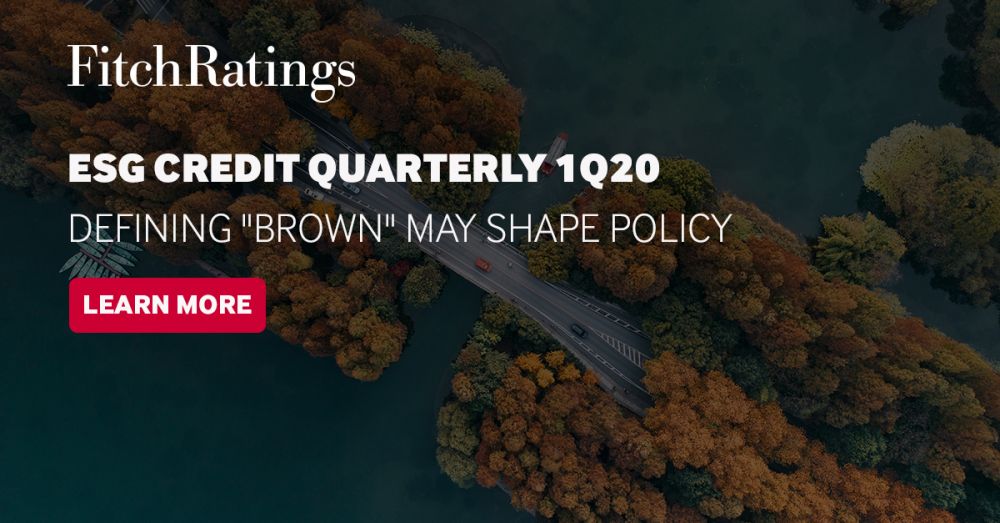Fitch Ratings: ESG Credit Quarterly: 1Q20
Defining environmentally harmful "Brown" activities will be more challenging than defining sustainable "Green" activities, but it potentially has greater credit implications, Fitch Ratings says in its inaugural "ESG Credit Quarterly" report.

Defining environmentally harmful "Brown" activities will be more challenging than defining sustainable "Green" activities, but it potentially has greater credit implications, Fitch Ratings says in its inaugural "ESG Credit Quarterly" report. The report captures Fitch's changing views on ESG, based on Fitch's ESG Relevance Scores (ESG.RS) and broader research.
Time-series data accumulated since Fitch launched ESG.RS last year shows how different ESG factors become more or less relevant to credit ratings. Governance scores were increased the most frequently, indicating that ESG factors affect the credit-rating decision more than before. Event-driven ESG risk factors tend to be more dynamic. Ecological-impact scores increased due to operation incidents such as tailing-dam issues for miners, while "exposure to social impacts" scores increased due to operational disruption to production in conflict zones. Litigation and regulatory investigations increased scores for customer welfare, product safety and data security.
A key development this quarter is the EU's publication of its final report on the taxonomy for sustainable activities, providing a list of "green" activities it deems to support the EU's environmental policies and the green-finance system. Fitch expects the listed activities to be a focal point for future support and direct investment. There have been calls for a corresponding "brown" taxonomy: a list of environmentally harmful activities. Fitch expects it will be even more difficult to find a global consensus on brown activities, given the starker economic trade-offs for more carbon-intensive economies.
However, defining brown activities could have greater credit implications than defining green activities, as it is likely that labelled activities will be the target of disincentive policies such as prudential regulation. The brown taxonomy could also inform how banks and asset managers screen for other fossil fuels or environmentally harmful activities. ESG considerations have also increasingly affected lending and investment decisions, in turn affecting corporates' ability to raise finance. Negative screening is the most commonly applied ESG strategy, and many asset managers apply exclusionary criteria across actively managed assets whether or not they are labelled as ESG. Sectors facing hard exclusion criteria are limited to the most severe social issues, but such criteria are increasingly applied to activities deemed environmentally harmful, such as thermal coal.






